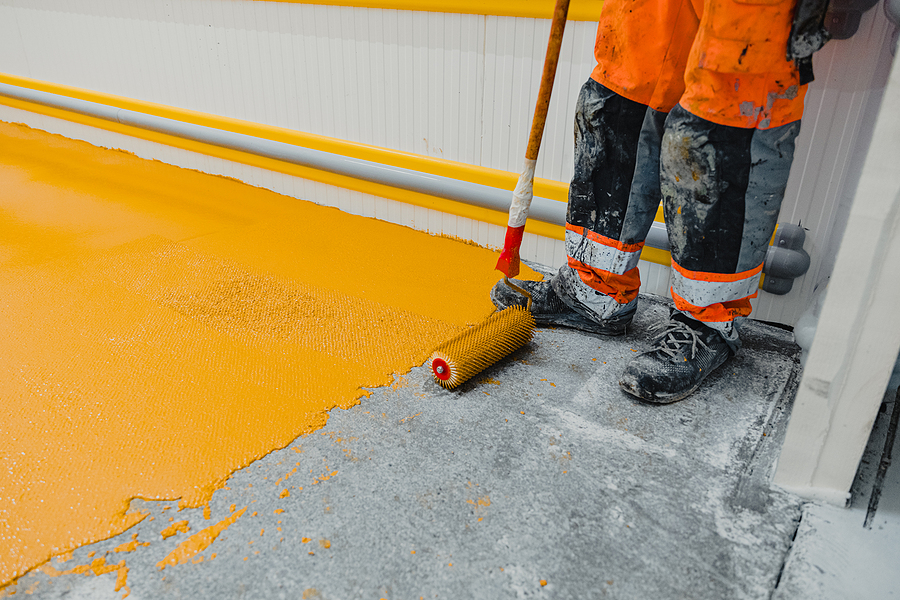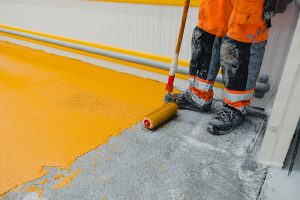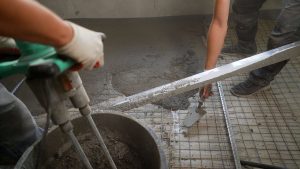If polished concrete is the star, surface prep is the director. It decides how the slab will accept densifier, how evenly it will grind, how the gloss will hold up, and how long the floor will actually last. You can buy the best diamonds and the most expensive guard in the world, but if the substrate isn’t prepared correctly, you’ll chase defects, fight premature wear, and never hit the clarity you’re expecting. That’s why seasoned crews say the job is won or lost before the first polishing pass, during surface prep for concrete polishing.
Prep Sets The Plane, Polish Reveals It
Polishing doesn’t hide anything; it magnifies it. Waviness, trowel marks, patchy hard-trowel burn, old adhesive ghosting, and hairline cracks all show up more once the floor reflects light. Proper surface prep levels high spots, opens tight paste, and blends repairs so the polishing stages can do their job, refining the plane rather than grinding against defects. When the plane is true, each grit builds on the last, yielding crisp clarity without overworking the slab.
Open The Concrete = Unlock the System
Concrete is a composite of paste and aggregate. If the surface paste is closed—burnished, contaminated, or glazed, the densifier can’t penetrate and diamonds will skate. Mechanical prep (typically metal-bond grinding) opens the surface so:
- Diamonds cut instead of smeared.
- Densifier penetrates deeply and reacts uniformly.
- Subsequent resin passes refine scratches rather than chase them.
Skipping or rushing this step leads to “mystery” dull spots later—really just areas where the system never got into the concrete in the first place.
Moisture, Contaminants, And Bond Breakers
Oils, curing compounds, acrylic sealers, mastic, and paint residues act like Teflon under polishing. They clog tooling and prevent chemical treatments from working. Effective surface prep for concrete polishing removes these bond breakers and drives contamination out of the surface zone. On older slabs, a diagnostic is worth its weight in gold: black tape tests for residue transfer, surfactant checks on oily bays, and trial passes to see how quickly diamonds load. Addressing contamination up front prevents streaking, burning, and premature tool wear later.
Repair And Joint Work: Small Details, Big Payoff
Cracks, spalls, pop-outs, and failed joints telegraph through polished floors. Quality Surface Prep includes chasing cracks to sound concrete, filling with polishable repair materials, and rebuilding edges that will otherwise crumble under traffic. Joints get cleaned, re-cut if needed, and filled with a semi-rigid material that supports wheels and prevents edge chipping. When these repairs are done at the prep stage, not “after we start polishing,” they blend into the first metal passes and finish uniformly with the field.
Matching Diamonds To The Slab
Not all concrete is poured alike. Hardness varies with mix design, finishing, age, and environment. A solid prep plan starts with a Mohs scratch or similar hardness check, then pairs the right metal-bond matrix (soft, medium, hard) to the slab so diamonds cut efficiently without glazing.
On soft, sandy mixes, crews may start a grit higher to avoid gouging. On glass-hard, burnished surfaces, a more aggressive opening cut is essential. Tooling strategy at the surface prep phase determines how many steps you’ll need later, and whether you’ll burn time chasing stubborn scratch patterns.
Densifier Timing Lives Or Dies On Prep
Densifier isn’t magic water. It reacts with available calcium hydroxide; it can’t fix a closed, contaminated, or uneven surface. When surface prep is right, the densifier soaks in predictably and binds the surface zone, improving abrasion resistance and clarity in the higher grits. When it’s wrong, densifier beads up, dries on the surface, or streaks—leading to blotchy reflectivity and poor wear. The best results come when the slab is evenly opened (often after the last metal or early resin step), clean of dust and residue, and ready to drink.
Dust Control And Clean Transitions
Great polished floors are the result of clean hand-offs between stages. Prep isn’t finished until the surface is vacuumed (HEPA), edges are blended, and slurry or fines are removed. Residue left behind acts like rogue grit, scratching the floor and forcing rework. That’s why pro crews treat surface prep as its own deliverable, complete with cleanliness standards—before moving to resins.
Lighting, Layout, And Expectations
Premium results require aligning the scope with the space. If you want full aggregate exposure, surface prep must plan for deeper opening cuts and more edge time. If your goal is a tight “cream” finish, the prep strategy shifts to keep the paste intact while still opening the surface enough for the densifier. Layout details, sawcut patterns, insets, and logo inlays are staged during prep so polishing doesn’t fight the design later. Good prep documents expectations in advance, so the final gloss and exposure match the spec, not a guess.
Why Prep Drives Cost And Value
Owners sometimes ask why early grinding and cleaning represent such a big chunk of the schedule. The answer is simple: surface prep eliminates the defects that would multiply costs downstream. Cut corners up front and you’ll spend those hours—plus more—trying to fix clarity, remove halos, or rework edges. Invest in prep and the polishing sequence flows, tools last longer, and the finish holds up under real traffic.
The Bottom Line
Polished concrete is a system. When surface prep is thorough, opening the surface, removing contaminants, repairing defects, matching tooling to slab hardness, and dialing in densifier timing—the rest of the system clicks into place. Gloss comes faster, clarity runs deeper, and the floor keeps its look under forklifts, carts, and foot traffic. Prep is not the first step; it’s the foundation.
Ready to get the prep right from the start? Let’s assess your slab, map contaminants and repairs, and build a step-by-step plan for consistent gloss and long-term durability. Request your surface prep & polishing assessment today.



